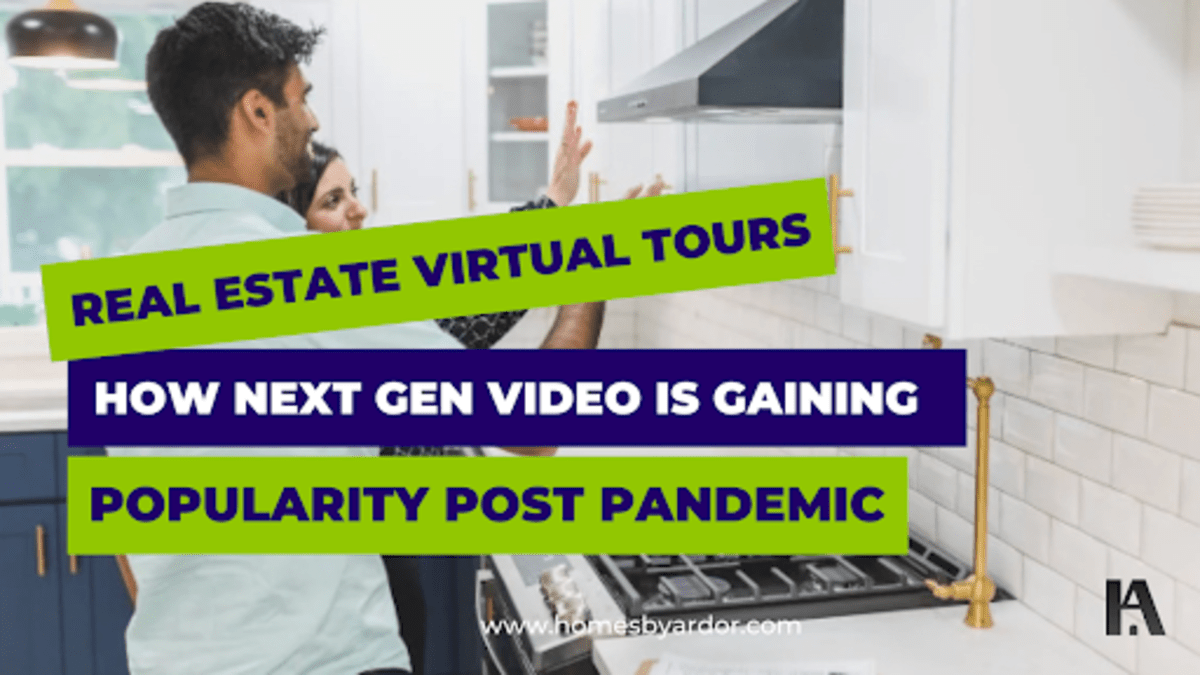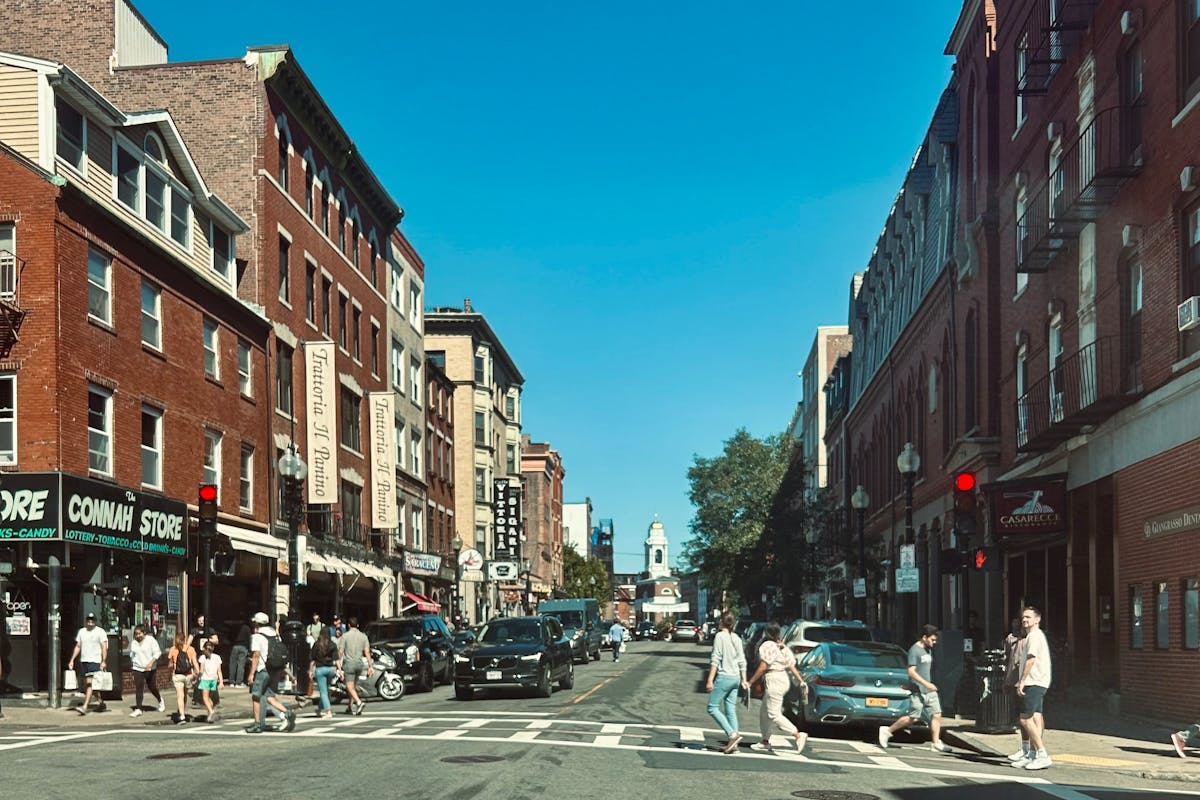
The COVID-19 pandemic really took its toll on every economic sector in the country. Everyone has had to adapt to new ways of doing business. Expectedly, the real estate industry underwent a significant transformation over the last few years. That’s particularly true regarding property marketing and sale.
When the social distancing measures came around, virtual tours became necessary for buyers and sellers alike. It lets them experience properties without physically being there. The tech stuck around for a while, and as the pandemic subsided, buyers and sellers sought more immersive and engaging experiences.
What’s the next step, then? Enter the next-gen video technology. It promises to create a super-charge real estate virtual tour experience for everyone. Agents and other creators can now achieve real-time, high-quality video streaming with more seamless and responsive sharing options.
But how has it been able to achieve all of that? How can you take advantage of the next-gen video technology for your virtual tours? This piece bares all you need to know about the rise of cutting-edge video tours.
The Broad Benefits of Real Estate Virtual Tours
Say you’re on the hunt for a new house. You’ve scrolled through countless pictures online and settled on a property that catches your fancy. Naturally, you’d arrange to view it. However, things didn’t look the same in person.
The rooms were in fact smaller than you expected; the decor is outdated, and the views looked nothing like the photos showed. It would all seem a waste of time then, wouldn’t it? Well, not if you explored the real estate virtual tour option.
A virtual tour lets you thoroughly inspect a property without making a visit in person. You’d also not have to rely solely on pictures. With the feature, you get to navigate through each room, acquire a sense of the layout and size, and even get a 360-degree view of the property.
But that’s not all. Thanks to rapid technological advancement, virtual tours for real estate can now offer even more features. Some tours include a measuring tool so you get a better sense of the room dimensions.
Virtual tours are seamless, affordable, and convenient – even more so when you’re halfway across the world away from the property in question. You save time and money a physical open house could have cost you.
Virtual Tours as Drivers for Real Estate Engagement
All of the benefits of real estate virtual tours we’ve discussed so far are broad. However, we must also mention that they’re customer-facing. If we know how virtual tours in real estate can help prospective homebuyers, how can they benefit the sellers and agents making and selling them?
For one thing, they now have a broader range of options to engage their target audiences. Virtual showings and property video tours exist in a variety of types. These differ in cost and complexity.
So you could have drone videos, live streams, and pre-recorded tours. Agents and sellers can take things even further with 360-degree footages, augmented and virtual reality, and story-driven marketing videos.
Expectedly, the more interactive the virtual tour experience is for the buyer, the greater viewing control the seller team or agent can wield. What’s more, the tech can get better with newer versions.
But virtual tours are more than the immersive experience they provide. Since they’re shareable on social media platforms, more eyeballs get to see the 3D tours. That automatically increases the visibility of the property and the agent’s own app or website.
When buyers make it to the company’s website, they’re more likely to stay there for longer periods. You can imagine that they’d want to spend more time exploring the property – a good thing for engagement, in our books.
What’s Next for Realtors?
As we might have hinted earlier, virtual tour tech will likely get better as the years go by, but in which direction is anyone’s guess.
Are we to see better video quality? Lighter and more accessible file codecs? Real estate agents might be in for a surprise treat on that one. However, it doesn’t mean you have to sit ducks and wait. There are patterns with which one can make predictions regarding the future of real estate virtual tours.
For starters, real estate video tours have been on the rise off the back of the COVID-19 pandemic. Necessity, they say, is the mother of invention. When the pandemic and lockdowns started, internet technologies were forced to evolve rapidly.
Now that the pandemic has eased a bit, technological advancements have shown little signs of slowing. That could only mean one thing: in the next five years, virtual tours on a property will have evolved and improved dramatically. Below are some of the ways it could happen:
The Heightened Interactions
As things stand currently, you can tour a home virtually using swipes and taps on a real estate website. But what if we told you such an interaction will only improve?
Property virtual tours are poised to get more engaging, allowing buyers to explore properties in greater detail and interact with objects in the virtual environment. What’s more, there’d be better virtual tours for real estate agents and buyers.
In time, buyers can ask questions and get immediate answers through interactive features such as chatbots or live video chat to help agents address any concerns and provide additional information about the property.
All of that sounds cool, right? It gets even better. Newer virtual real estate websites can learn about tour visits and use the data to boost efficiency over time. For example, buyers can seamlessly save and revisit specific properties they are interested in, and agents can give tour suggestions and curated listings based on that.
The Rise of Augmented Reality/Virtual Reality
You might not realize it yet, but tech businesses are investing heavily in Augmented Reality (AR) and Virtual Reality (VR). They both work on the premise of superimposing computer-generated images on top of real-world objects.
Upon a closer look, one can already see how such concepts fit into real estate virtual tours. Buyers get to see how furniture or decor would look in a given space before committing to purchase. Sellers can also showcase potential renovations more seamlessly.
An AR/VR-powered virtual tour makes for more interactions as well. Users get to move objects or change the layout of a space in real-time. They could also view contextual information about the property, such as historical or cultural significance, nearby amenities, or relevant market data.
It’s nice to know that we already have hardware components ready for AR/VR. You’ve got devices like HoloLens and Oculus headsets that can natively run AR and VR applications. More accessible augmented and virtual reality devices are sure to exist in the coming years.

How You Can Take Advantage of Next-Gen Virtual Tours
From all indications, the technology behind virtual tours is growing in leas and bounds, However, such progress is only as good as the agents who can incorporate them in their sales and marketing strategies.
How do you intend to utilize real estate virtual tours, especially now that they’re getting more sophisticated? Below are a few pointers:
1. Invest in the Right Equipment
An excellent virtual tour starts with the right equipment. They let the user take crisp shots and useful angles. For that, you’d need a 360-degree camera and a tripod. You can rent those if you don’t intend to make lots of videos. A panoramic head will also come in handy, if you can grab a hold of one.
Aerial shots are all the rage these days, so you’d need equipment for that too. You can either buy or rent a drone.
2. Select the Right Virtual Tour Platform
Once you’ve sorted out virtual tour hardware and equipment, the next thing is getting the platform for them. As it is, there are many virtual tour platforms available on the internet today. You’ve got virtual tour suites like Matterport, iGUIDE, and Kuula with dynamic offerings.
Bear in mind that each of the platforms has its own unique features, so it’s important to choose the one that best fits your needs and budget. Also, you’d have to consider compatibility: an excellent virtual tour application or service is one that can work seamlessly with your website framework and content resources.
3. “Lights, Camera, Action”
You can start filming a virtual tour with the stage set and camera ready to roll. Not much has changed with the planning requirements for next-gen videos. All you have to do is decide which areas of the property you want to highlight. It helps if you also have an idea of how you want to guide viewers through the space.
During filming, try to capture each frame, room, and space from multiple angles. Don’t forget to ensure that the lighting and sound are good.
4. Cover the Post-Production
After filming, you’ll need to edit the virtual tour. That’s where all the work is when setting up a virtual tour. Generally, the editing process includes stitching together the footage, adding interactive elements like hotspots, and enhancing the overall visual quality.
You may also add music, voiceovers or captions as you deem necessary. The good news is that you can use many editing applications for a breezy editing session.
When editing is done, it’s time to post it. You can embed the tour on your website, share links to it on social media, or send it directly to potential buyers. Typically, the work doesn’t end there, as you’d need to promote the tour as much as possible to increase its reach.

Wrapping Up
The age of technology is spritzing by; it’s almost on a blink-and-you-miss-it level. We can see such rapid advancements in virtual tours in the real estate industry. Real estate virtual tours offer unparalleled immersion and interactivity for agents, clients, and homebuyers.
We can thank AI, VR, and AR technologies for that: they’ve enabled agents to personalize their tours and provide customized recommendations to potential buyers, making the entire process more efficient and effective.
They’ve also enabled buyers to explore properties in 3D and view them from different angles, even from a remote location. In particular, the immersive nature of VR and AR technology makes it easier for buyers to envision themselves living in the property and make informed decisions.
But the question is, how can we embrace such methods and incorporate them seamlessly with traditional real estate operations?
For one thing, agents and companies can start by investing in the right equipment and software, as well as training their teams to use them effectively. They can also explore new ways of personalizing virtual tours to meet each client’s unique needs and preferences.
On the other hand, homebuyers can prepare for next-gen virtual tours by investing in VR headsets and compatible devices to enhance their experience. Through all that, they should be open to exploring new technologies and remain open-minded to new ways of viewing properties.
FAQs
How are New Technologies Affecting Real Estate?
Newer technologies are already transforming how properties are bought, sold, and managed in the real estate industry. For instance, Virtual and Augmented Reality enable potential buyers to explore properties from the comfort of their own homes, providing a more immersive and realistic experience.
What’s more, AI democratizes data-driven insights, while IoT (Internet of Things) optimizes building maintenance.
What Is the Future of Virtual Reality in Real Estate?
Things look promising virtual reality (VR) in real estate. Already, the tech offers numerous benefits to professional realtor virtual tours. You can now have VR-powered virtual tours that are cheaper and globally accessible. It follows to expect a broader use range in the future.
How Will the Metaverse Change Real Estate?
The metaverse is the colloquial word for the Augmented/Virtual reality platform owned by Meta. It’s shown great potential to revolutionize the real estate industry by creating a new digital world that will allow for entirely new forms of interaction and commerce.
With the Metaverse, we can expect to see new forms of virtual property ownership in the future. Property development and transactions might get redefined along the line as well.
We understand that searching for a new home can get overwhelming, but Ardor Homes Massachusetts is here to make it easier. Our platform offers a vast selection of high-quality homes from trusted real estate agents and developers, all in one convenient location.
The best part? You can take virtual home tours of the properties you’re interested in right from the comfort of your own home.

In her 25-year career, Steph Wilkinson has been involved in the acquisition, marketing and sales of over $3 Billion dollars of residential real estate. A number of years ago, Steph transitioned into Brokerage Leadership for National real estate brands and tech start-ups. She has served as a Business Strategist for real estate agents and brokerages alike and is also a real estate coach and trainer. In her new role with the Iconic Team, Steph will be responsible for the growth of the team and will be working with all of our agents to increase their productivity and bottom line.




